Teacher-Student Duo Author a Chapter on Graph Neural Networks
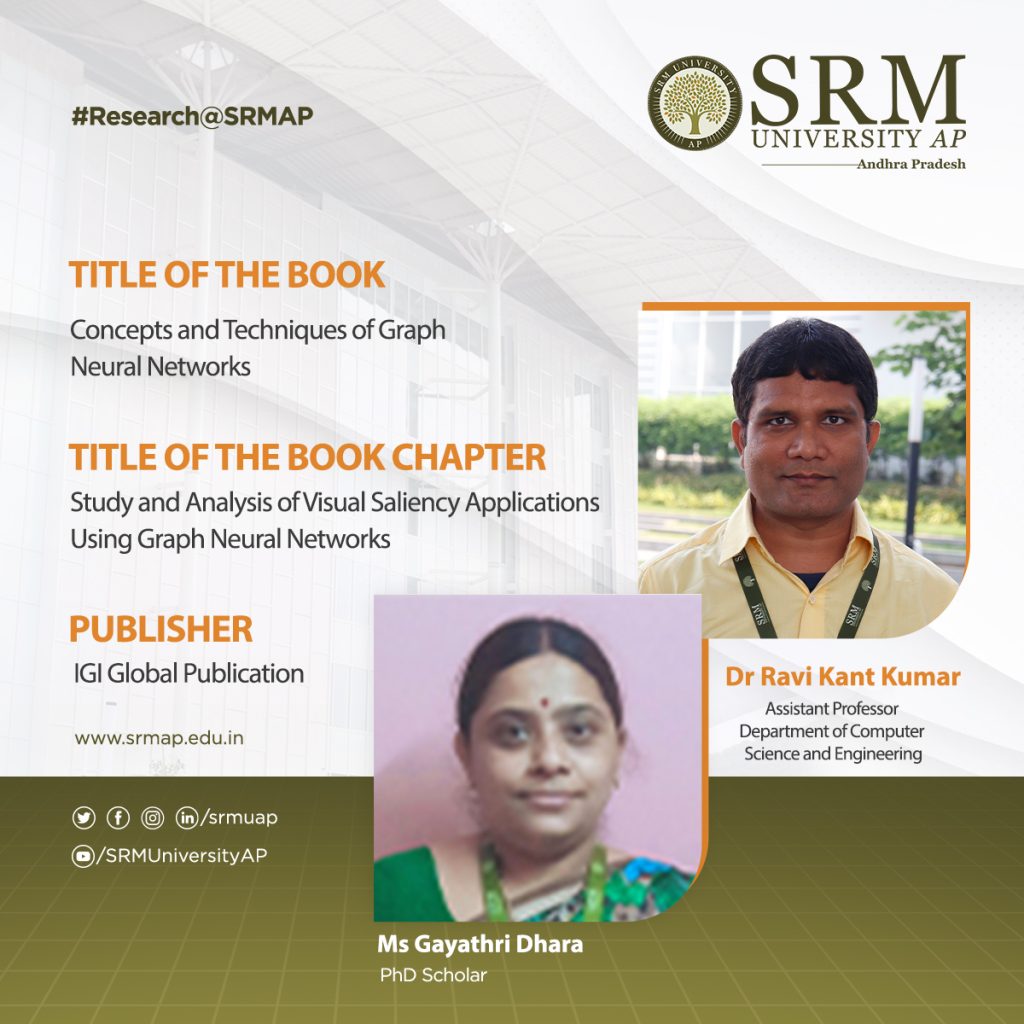
Dr Ravi Kant Kumar, Assistant Professor at the Department of Computer Science and Engineering at SRM University-AP and his research scholar, Ms Gayathri Dhara have recently made a significant contribution to the field of Graph Neural Networks. The teacher-student duo have offered relevant analysis of visual saliency applications using Graph Neural Networks (GNN) in their book chapter titled “Study and Analysis of Visual Saliency Applications Using Graph Neural Networks” in the book, Concepts and Techniques of Graph Neural Networks. The topic of their study will prove to be a key source of reference for industry professionals, researchers, scholars, academicians, practitioners, instructors, and students.
Description and Significance of the Chapter
The chapter covers the practical applications of GNN in the field of visual saliency. Various applications of computer vision problems implemented using graph neural networks (GNNs) have been studied and analysed in this chapter. It also includes the design approach of GNN, the various computational models used in GNN, its challenges and recommendations. The social significance of GNN in visual saliency extends to various domains like Human attention modelling, Advertising and marketing, Visual content understanding, and so on.
Significance of GNNs
Graph Neural Networks (GNNs) have gained significance in the field of visual saliency due to their ability to model complex relationships and dependencies within visual data. Visual saliency refers to the process of predicting the most visually prominent regions or areas in an image or video that attract human attention. It plays a crucial role in various computer vision applications, such as image understanding, object recognition, and scene understanding. GNNs can learn spatial dependencies and feature representations from visual data. There are many methodologies that address the detection of the salient object using GNN. GNNs can handle multi-modal data, combining visual information with other modalities such as textual or semantic features. This integration allows GNNs to leverage additional cues and contextual information to improve visual saliency prediction. So, studying these different salient object detection methods using GNN and knowing the challenges of GNN will help in meeting our research objectives.
- Published in CSE NEWS, Departmental News, News, Research News
Dr Aswini Presents a Poster on the International Stage
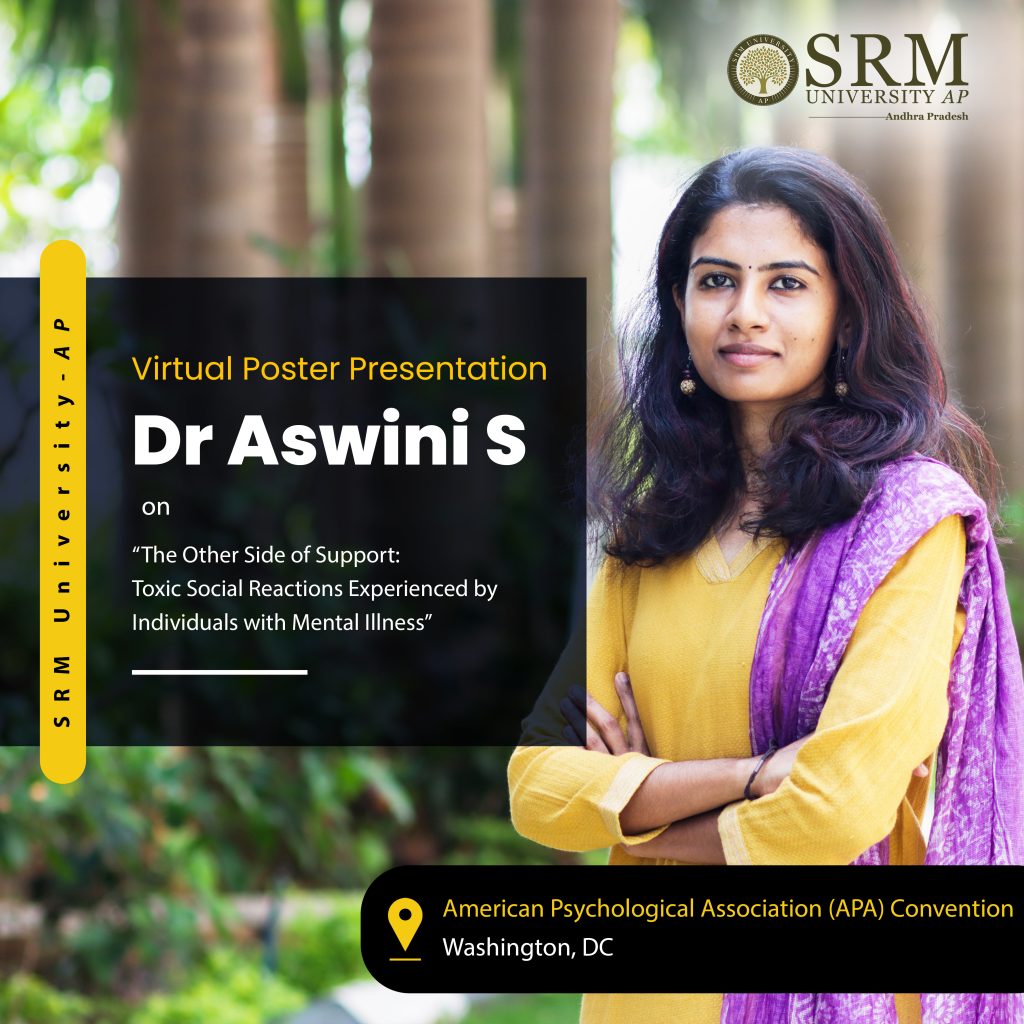 In a proud moment that highlights our institution’s commitment to excellence and innovation, we are thrilled to share the success of a recent poster presentation that graced the global stage.Dr Aswini S, Assistant Professor at the Department of Psychology at SRM University-AP recently represented the varsity at the American Psychological Association (APA) Convention in Washington, DC from August 3 – 5, 2023. The occasion was a prestigious Poster Presentation, titled, “The Other Side of Support: Toxic Social Reactions Experienced by Individuals with Mental Illness”
In a proud moment that highlights our institution’s commitment to excellence and innovation, we are thrilled to share the success of a recent poster presentation that graced the global stage.Dr Aswini S, Assistant Professor at the Department of Psychology at SRM University-AP recently represented the varsity at the American Psychological Association (APA) Convention in Washington, DC from August 3 – 5, 2023. The occasion was a prestigious Poster Presentation, titled, “The Other Side of Support: Toxic Social Reactions Experienced by Individuals with Mental Illness”
Abstract
Social support is undeniably an important aspect of everyday life, and it is particularly
important in the context of challenges. The role of social support as a protective factor is well established (Wright et al., 2013) in research, especially in the context of mental illness (Frame, 1981; Teo et al., 2020). While acknowledging the overwhelming evidence on the importance of social support, there is scant literature on the negative experiences of seeking and receiving support. The qualitative investigation revealed the toxic social reactions under the disguise of social support as reported by participants with mental illness (N=17). Participants experienced interactions which sometimes resembled social support but were either harmful or not beneficial to them. The frequently reported reactions of participants are trivialising of symptoms, toxic positivity, and fake sympathy. In comparison to physical illness, the indicators of mental illness are less objectively perceptible to others. Hence, the practice of dismissing symptoms and attributing disorders as momentary feelings, or imaginary experiences are found to be common. Moreover, the suggestion to be positive and reject anything that may trigger negative emotions along with the display of fake sympathy by people around is also found in participant narratives. This signifies the importance of studying social support through different dimensions rather than just focusing only on support that is helpful and beneficial. Future explorations can focus on understanding specific sources of support, kinds of support and the impact that such challenges have on the quality of relationships with significant others.
Keywords: Toxic positivity, mental illness, social support
The remarkable achievement underscores not only the quality of education we provide but also the dedication of our faculty in making impactful contributions to their fields.
- Published in Assistant Professor, News, Psychology, Psychology Faculty, Psychology News
Follow your Passion or Profession: Ms Ramya Proves Why Not Both!
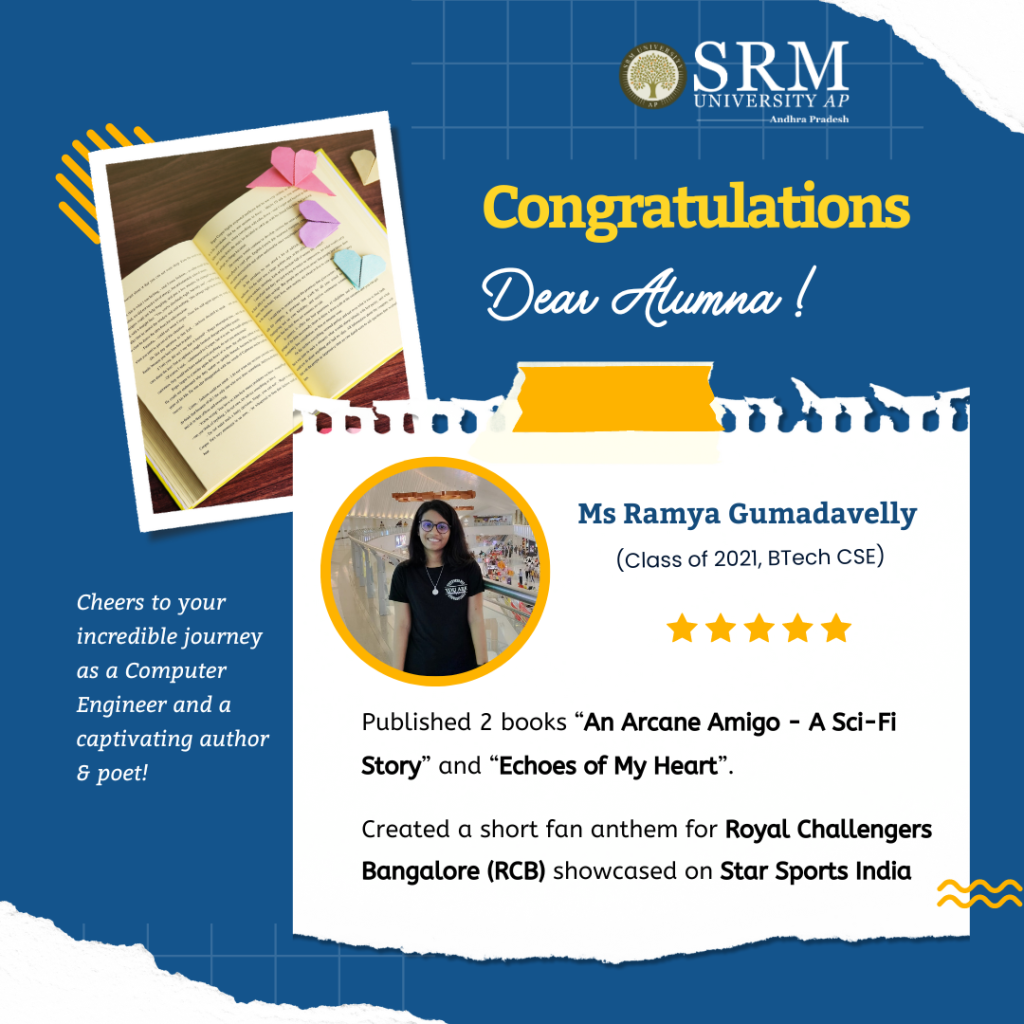
“Happiness lies in the joy of achievement and the thrill of creative effort” said Franklin D Roosevelt. The Directorate of Alumni Relations proudly announce that our dear alumna, Ms Ramya Gumadavelly (Class of 2021 BTech CSE) has manifested the saying with her remarkable achievement of publishing two captivating books “An Arcane Amigo – A Sci-Fi Story” and “Echoes of My Heart”. Her third book “Who in the World Am I?”, awaiting release, undoubtedly promises to be another milestone in her literary journey!
Her works, including a short fan anthem for Royal Challengers Bangalore (RCB) and several poems dedicated to her favourite cricketer Virat Kohli, have been showcased on Star Sports India for the last IPL season!
Congratulations to Ms Ramya for her remarkable achievement! Being a Computer Engineer by profession did not stop our talented alumna from pursuing her passion for literature and poetry!
Click to check out her published works:-
An Arcane Amigo – https://amzn.eu/d/d0nSO3F
Echoes of My Heart – https://amzn.eu/d/ds9UXVe
- Published in Alumni, Alumni Relations News, Departmental News, News
Biological Science Researcher bags DST INSPIRE Fellowship
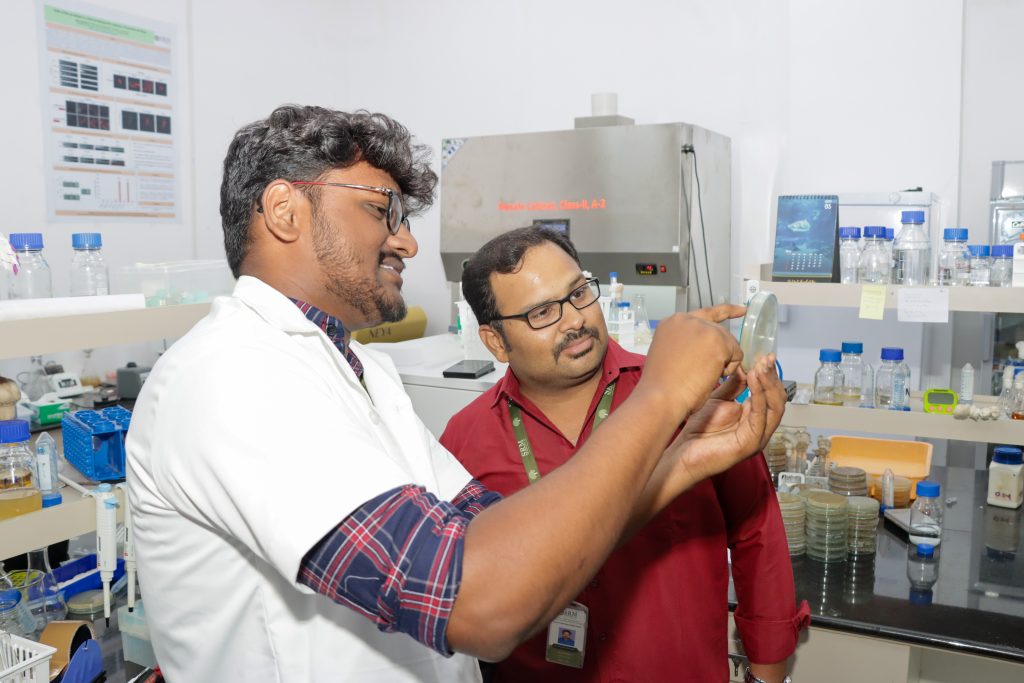
Barath Sivaraj, a research scholar from the Department of Biological Sciences at SRM University-AP has achieved an outstanding feat by receiving the DST INSPIRE Fellowship, a highly regarded programme sponsored and overseen by the Department of Science & Technology.
Sivaraj’s research focuses on exploring how bacteriophages, a type of virus that infects and reproduces inside bacteria, utilises the bacterial system. This research has earned Sivaraj the Fellowship, which runs for a duration of 5 years. The researcher also gets to carry out his research at any national or international laboratories other than their host institute for a period of 18 months.
Barath expresses his immense delight and pride in receiving this fellowship and considers it a significant milestone in his academic journey. Sivaraj explains that applicants must meet several criteria, such as being a top-ranked student in a full-time postgraduate science programme or a related field at the university level. Sivaraj credits his research supervisor, Dr Sutharsan Govindarajan, for guiding him through the application process. As a future prospect, Sivaraj plans to pursue his post-doctoral studies abroad and eventually wishes to offer his professional services at a reputable university.
We wish him all success!
- Published in Biology News, Departmental News, News, Research News
Assistant Professor Certified as Remote Pilot Instructor under DGCA
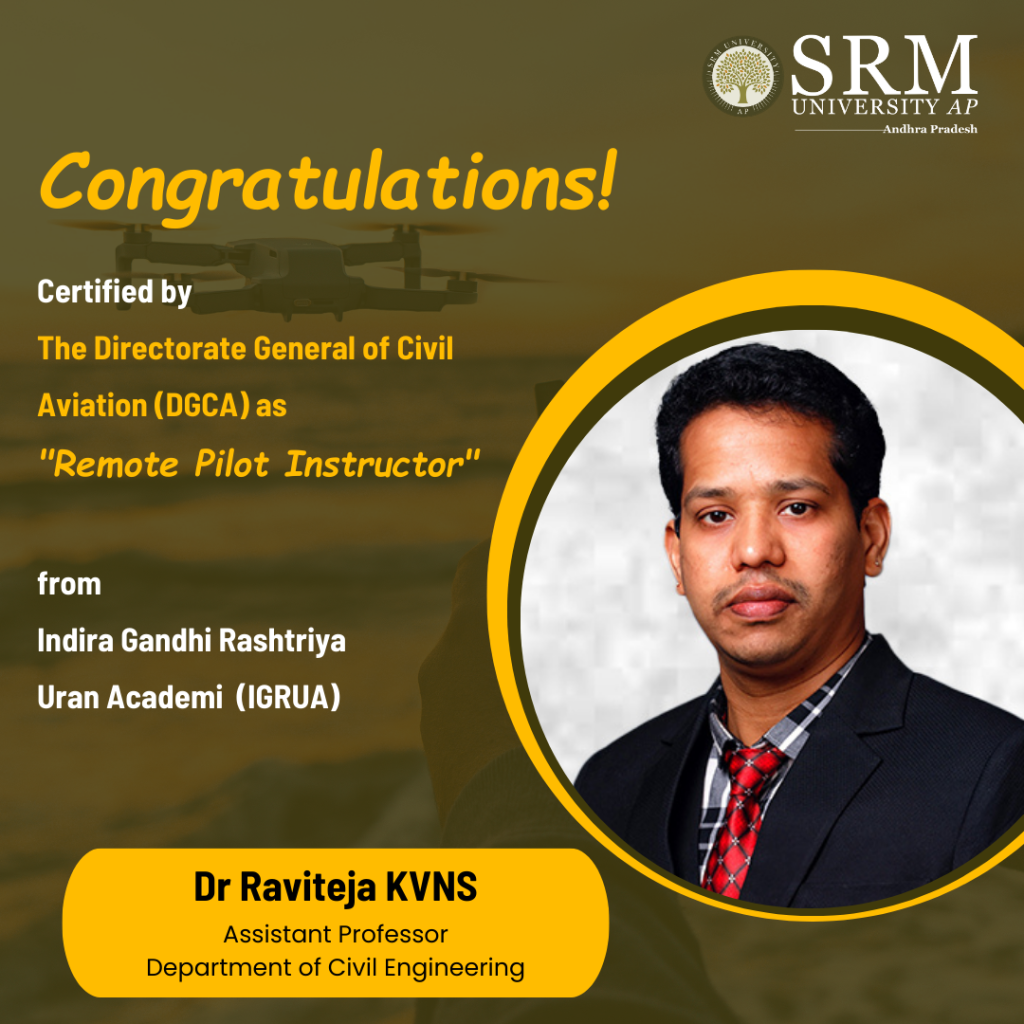
The world of technology is constantly evolving, and the aviation industry is no exception. From being operated exclusively by humans, aircraft systems have now advanced into Unmanned Aircraft Systems (UAS). To stay current in this ever-changing landscape, it’s crucial to update and upscale one’s skills.
Dr Raviteja KVNS, Assistant Professor at the Department of Civil Engineering, has successfully completed his rigorous training programme at the highly acclaimed Indira Gandhi Rashtriya Uran Akademi (IGRUA) and is now certified as Remote Pilot Instructor by The Director General of Civil Aviation (DGCA). With his newfound expertise on unmanned aerial vehicles, Dr KNVS is now poised to offer his invaluable guidance and support to aspiring drone pilots.
We extend our sincere congratulations to him on this outstanding achievement.
- Published in CIVIL NEWS, Faculty Achievements, News
Dr. Tewari receives Homi Bhabha National Institute’s Outstanding Doctoral Student Award
Dr. Somesh Vinayak Tewari, Assistant Professor, Department of Electrical and Electronics Engineering (SRM University AP) was awarded the prestigious “Outstanding Doctoral Students Award”, from Homi Bhabha National Institute (HBNI) at an event held at the Department of Atomic Energy (DAE) Convention Centre, Anushaktinagar, Mumbai. Dr. Tewari was presented this award for his PhD thesis titled “Study of surface flashover of insulator in gases at high pressure.”
- Published in Departmental News, EEE NEWS, News
AutoNxt Automation visits campus
Interactive session with industrial inventors
 World’s First Electric, Autonomous Tractor
World’s First Electric, Autonomous TractorKaustubh Dhonde, CEO, Swadeep Pillarisetti, Advisor and Board Director, Sachin Gowda, Embedded Engineer, and Aswanth Mulupuri, Intern, Department of Automation of AutoNxt Automation – an innovative Mumbai based startup, visited SRM University AP, Andhra Pradesh for a two-day program as a part of the National Science Day celebration at the campus. The company demonstrated their latest technological marvel, the World’s First Electric, Autonomous Tractor. “A lot of research is conducted globally with multiple companies working on the automation of on-road vehicles. However, off-road vehicles’ automation has hardly been touched upon previously, although there are less variables being controlled environments like farms, industrial plants, etc where it is more feasible a solution”, says Mr. Swadeep who has been advising the company which has brought about a revolutionary breakthrough in the domain of Indian agriculture.
Some of the exceptional features of the Electric Automated Tractor include fully electric drivetrain, low NVH (Noise, Vibration and Harshness) levels, mobile application for interaction with the tractor, live tracking, geo fencing capabilities, battery and system status reports on mobile app, obstacle detection technology and optional automatic hydraulic control of implements. The company is also planning to develop a common charging point that will use free energy sources.
 Students marveling at the automated tractor
Students marveling at the automated tractor
Demonstration by the CEO
AutoNxt Automation has created its niche by offering cost-effective and energy-efficient solutions to farming problems. Mr. Kaustubh believes “It is important that technology reaches out to the entire farmer class”. He further explains the crises of the Indian agricultural system that can be resolved using the Electric Automated Tractors, “The harvesting timeframe is narrow which increases the demand of skilled labour during this season, exponentially enhancing the cumulative cost of farming. The fully automated tractors embedded with camera identification systems and sensors reduce the operational expenses up to 4 times. Also, the IoT sensors give real-time feedbacks ensuring accuracy in tilling, ploughing, and spraying insecticide.”
The representatives of the company held a demonstrative session with the students and faculty on 26th February 2020, where they introduced the tractor and explained its technological viabilities. An interactive session was also held with the students on the same day. The session enabled the students to identify the practical applications of their acquired theoretical knowledge. The entrepreneurs inspired the students to create an impactful change that will eventually benefit society as a whole. Also, it creates an opportunity for them to be closely associated with people from the industry as well as the research domain. On the following day, a presentation was made to the faculty members of SRM AP to trigger discussions on technologies used by the Electric Automated Tractor. In the end, Mr. Kaustubh and Mr. Swadeep expressed their intent to involve students to work on real-time projects with the company, along with taking assistance from the faculty members to overcome hurdles pertaining to AI/ML technologies. Mr. Swadeep says, “The students will be exposed to real case studies, contribute to the improvement of the country, and in the process earn many accolades”.

Sachin Gowda interacting with the students
- Published in Mechanical Engineering NEWS, News
Young minds excelled at national level Hackathon
Amidst the quarantine, students of SRM AP and members of NEXT TECH LAB, have exhibited their expertise in HACKNITR, a national level hackathon organized by NIT Rourkela on 21-22 March 2020. The outstanding merit of their project has enabled them to bag the Runner-Up and 2nd Runner-Up position at the hackathon.
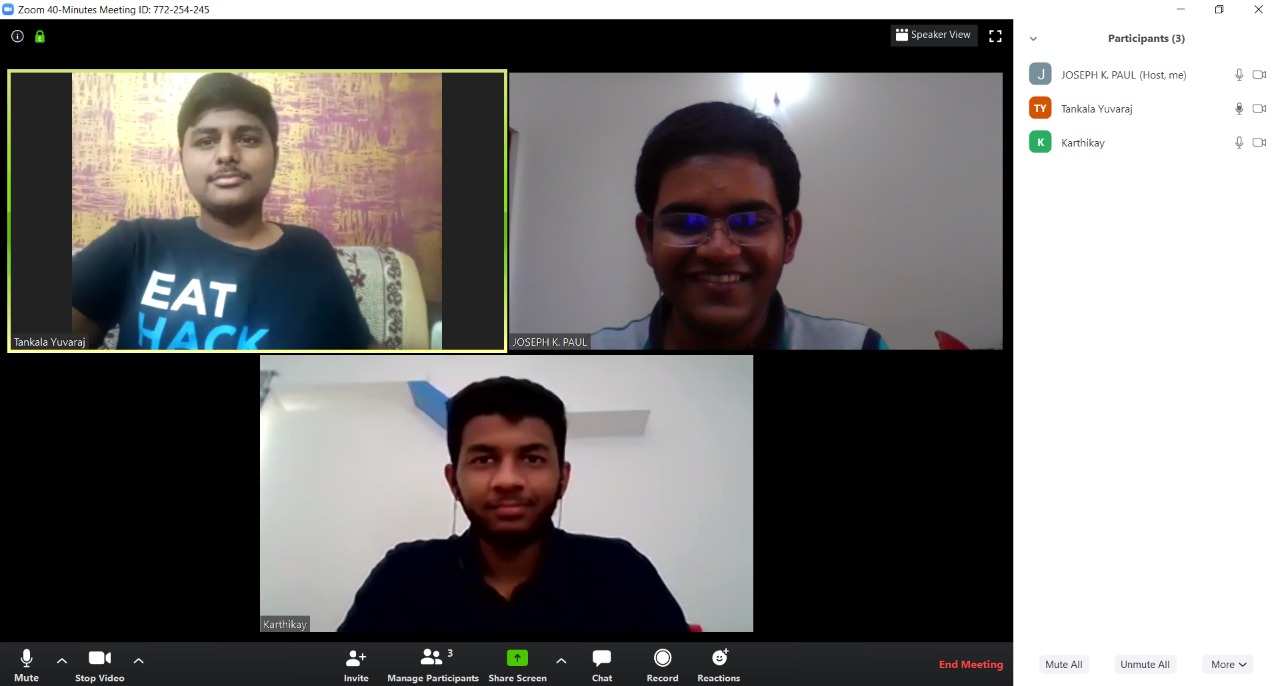 Team ASTUTE BOTS consulting
Team ASTUTE BOTS consulting
Team ASTUTE BOTS, comprising of 1st-year students, Tankala Yuvaraj, Karthikay Gundepudi and Joseph K. Paul, was recognized as the Runner-Up. They used the AI-IoT platform to develop DRONEYES; a prototyped solution that can be used to reduce poaching. It is an aerial reconnoiter which flies in stealth mode and takes the video or photo of a suspected poacher. This is done by the highly trained object detection model called YOLOv3. These eyes not only detect objects on the terra firma but also sends the exact location via GPS. “With the help of cloud technology, we can share the data in real-time so that the user/organization can take the required initiative by locating the exact place of poaching”, explains Karthikay. We were inspired to attend hackathons by Anshuman Pandey, and Next Tech Lab supported this achievement.
Another team PUSH, where Karthik Epperla, 2nd year, and Ishita Agarwal, 1st year, participated, has received the 2nd Runner’s up award. The students worked on an AI-VR-Blockchain based application to help people with autism improve communication, social and other basic abilities required to live in a society. It gives a set of YES/NO questions that are to be answered by either the parent of the child or the adult suffering from Autism and then it matches those answers with the dataset which then returns the level of autism that the child/adult is suffering from. Depending on the level, the user can choose the extremity of VR therapy. When the child goes through the VR session, the parent can view what their child/ adult is doing in the virtual environment using the parent app from anywhere and advise their ward offering extra support to the patient. ” Our application has 3D simulations of real-life situations wherein autistic children/ adults (mostly children) can practice and understand how to behave/react in those situations and overcome their fear while facing a similar situation in real life. “, adds Karthik.
Karthik acknowledges Adithya Ramakrishnan the founder of Next Tech Lab and his lab mate, Lakshmi Vallala for implanting the noble idea that AI can help in the rare medical condition, Autism. They have constantly been in touch with a few special schools and treatment centers to know about the behaviour and nature of autistic people so that they can keep on building different versions of applications.
In the natal stage of their academic career, the students are guided and nurtured in an environment by the Next Tech Lab and the faculty members which inspires them to positively impact the society. The ample exposure offered to the students will not merely encourage them, but also enable them to improve their concepts.
Small-World Wireless Sensor Network to Help Making Smart Applications for Industries
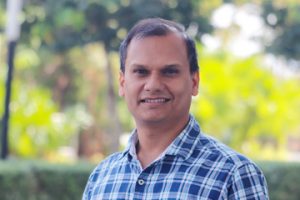 Dr Om Jee Pandey, Assistant Professor, Department of Electronics and Communication Engineering, has recently published two papers in renowned IEEE journals. His paper “Secrecy Performance Analysis of Two-way Relay Non-Orthogonal Multiple Access Systems” was published in IEEE Access Journal, having an impact factor: 4.06. Whereas, “Fault-Resilient Distributed Detection and Estimation over an SW-WSN Using LCMV Beamforming” was published in IEEE Transactions in Network and Service Management (Impact factor: 4.682). The study was done in associations with Prof. Rajesh M Hegde, Department of Electrical Engineering, IIT Kanpur and Prof. Ha H. Nguyen, Department of Electrical and Computer Engineering, University of Saskatchewan, Saskatoon, Canada. His research was focused on developing efficient Wireless Sensor Network services in small-world models. The proposed research can be applied in developing many state-of-the-art applications in the areas related to healthcare systems, climate-smart agriculture, intelligent transportation, home automation, manufacturing, smart utilities, and industries etc.
Dr Om Jee Pandey, Assistant Professor, Department of Electronics and Communication Engineering, has recently published two papers in renowned IEEE journals. His paper “Secrecy Performance Analysis of Two-way Relay Non-Orthogonal Multiple Access Systems” was published in IEEE Access Journal, having an impact factor: 4.06. Whereas, “Fault-Resilient Distributed Detection and Estimation over an SW-WSN Using LCMV Beamforming” was published in IEEE Transactions in Network and Service Management (Impact factor: 4.682). The study was done in associations with Prof. Rajesh M Hegde, Department of Electrical Engineering, IIT Kanpur and Prof. Ha H. Nguyen, Department of Electrical and Computer Engineering, University of Saskatchewan, Saskatoon, Canada. His research was focused on developing efficient Wireless Sensor Network services in small-world models. The proposed research can be applied in developing many state-of-the-art applications in the areas related to healthcare systems, climate-smart agriculture, intelligent transportation, home automation, manufacturing, smart utilities, and industries etc.
In order to develop efficient Wireless Sensor Network (WSN) services, several methods have been proposed for node localization, clustering of sensor nodes, new routing algorithms, adaptive duty cycles, usage of mixed-transmission models, placement of intelligent gateways, usage of mobile elements, and bypassing holes. However, the introduction of small-world characteristics in a WSN has hitherto not been used in this context. A small-world network is typically characterized by a low average path length and high average clustering coefficient and has been widely used to model social networks. However, small world models have not been used in the development of WSN. The primary objective of this research is to develop small world models for WSN services such as sensor node localization, data gathering, data fusion, network lifetime maximization, energy-balancing, reduced data transmission delay, time synchronization, energy-harvesting, and robust distributed detection and estimation. A small world WSN reduces the number of hops required for data transmission, and maximal utilization of sensor nodes closer to the sink. Other advantages of small world WSN include efficient bandwidth utilization, increased network lifetime, and fast convergence of event detection and parameter estimation. Small world WSN developed in tandem with novel routing strategies leads to improved WSN services for various applications.
In WSNs, sensor devices transfer the data cooperatively using multiple hops over a network. Multiple hops required for data transmission over a WSN leads to reduced network performance in the context of device localization, energy efficiency, energy balancing, data latency, speed of event detection and parameter estimation, and network robustness. This is because of poor distance estimation between sensor device pairs, maximum utilization of sensor devices closer to the sink, and a short radio range of sensor devices. Hence, the primary focus of this research work is to reduce the number of hops required for data transmission. In this context, Small World Characteristics (SWC) can be introduced in a WSN, leading to a small world WSN (SW-WSN). An SW-WSN is a well-connected network with reduced hop counts between node pairs.
Small world phenomena were first observed by Stanely Milgram in social connectivity of people. Later, it came out as a theory of “six degrees of separation”. Six degrees of separation claims that all people are six, or fewer, social connections away from each other. This theory is also known as the 6 Handshakes rule. Further, small-world phenomena have been investigated in graphs. Subsequently, SWC is observed in wireless networks. In general, small world WSNs (SW-WSNs) are characterized by low Average Path Length (APL) and high Average Clustering Coefficient (ACC). For an undirected WSN with N nodes, representing a regular network, the APL increases linearly with the number of nodes present in the network. On the other hand, in a WSN having SWC the APL, between two randomly selected nodes grows proportionally to the logarithm of the number of nodes in the network. “WSNs are spatial graphs, where links are created using radio connectivity. There is a limit on the radio range of a sensor node, hence in such networks, the long-range connections are generally absent. Thus, these networks are clustered, but they do not experience small-world phenomena. Hence, the primary focus of this work is to develop SW-WSN using various methods leading to efficient WSN services” explained Dr Pandey.
Dr Pandey is now busy to take the studies further. His future projects include-
• Small World WSN (or SW-WSN) Development for Smart Healthcare.
• Cognitive SW-WSN for Energy-Efficient CPS and IoT applications.
• Climate Smart Agriculture using Cognitive SW Characteristics.
• Low-Latency and Intelligent Transportation over small world CPS.
• Multi Sensor Fusion over SW-WSN for CPS/IoT Applications.
• Information and Context Quality in WSN, IoT and CPS Networks.
- Published in ECE NEWS, News, Research News
Next-Tech Lab Scaling New Heights: Won Three Hackathons in a Row
The unstoppable team of Next-Tech Lab of SRM University- AP, has again brought laurels to the University by winning three hackathons in a row. During this lockdown while some devoted their time to newfound hobbies, our young researchers successfully developed a fresh multiplayer virtual reality game – ‘Whack A Mole’ and a cloud-based multiplayer FPS in Virtual Reality- ‘Desert Shooter’. The three-member team has successfully bagged the second prize in the International / Professional Award at SKYHacks2020; Best echoAR Hack at Silicon Valley Hacks; and Best AR/VR hack at HackNow, organized by Cal Hacks, a non-profit organization at the University of Berkeley, California.
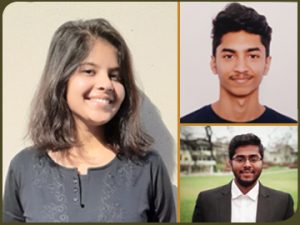
Karthik, Koushik & Khushboo (Clockwise)
When asked how the idea of making such a game crossed their minds, Epperla Karthik, a 2nd Year student of Computer science and Engineering and a member of the team, said, “My family loves attending Tradeshows, every time we attend one my dad and I challenge each other to win a game of Whack A Mole. But, due to strict quarantine that my family is following, it’s been a while now for such challenges. My teammates and I, being gaming and virtual reality enthusiasts, decided to develop a VR version of ‘Whack A Mole.’”
‘Whack A Mole’ is a multiplayer virtual reality game that allows users to play against the computer or their families or both! One can use it on iOS or Android. It is built on Unity3D, on top of Photon PUN and GoogleVR SDK. It is also integrated with Google Firebase. “This was the very first time we were working on the development of virtual reality games and networking. As we had to run the game on our phone to record the gameplay, the output video on YouTube is a bit blurry,” explained Khushboo Sharma, another member of the team and a 2nd-year student of Computer Science and Engineering. “We completed the development of the game in only 20hrs, starting from scratch. We developed a few of our own UI elements and game assets. I feel the User-Interface of the app and the effects are pretty cool. VR development is real FUN! Moreover, there are a lot of API and SDK that unity supports,” exclaimed Koushik Bhargav, a 3rd-Year student of Computer Science and Engineering and the third member of the team.
‘Desert Shooter’ is another multiplayer virtual reality game developed by the team that allows users to play against the computer or their families or both. You can connect with your friends and play together. The game consists of a swarm of robot ships moving towards you and you have to protect yourself from them. “The interesting part is that all of this happens in Mixed Reality which makes the game immersive. We built it on Unity3D, on top of Photon PUN and GoogleVR SDK, Echoar. It is also integrated with Google Firebase and the assets are stored in echoar cloud. This project won the best AR/VR hack at “Hack: Now” which is organized by the University of California Berkeley,” said Epperla Karthik.
The team has plans to make this game to be a cross-platform game. Therefore, their next plan of action is to make the web version of it. The team is also planning to release it to production so that users can have an immersive experience of modern gaming techniques.
It is again proved that pure talent can never be put in quarantine. It will always find a way to express itself to the world. Our young developers have brilliantly used the ample time and opportunity to put their brains in best use and to bring recognitions from nationally and globally acclaimed competitions.
- Published in CSE NEWS, News, Students Achievements


